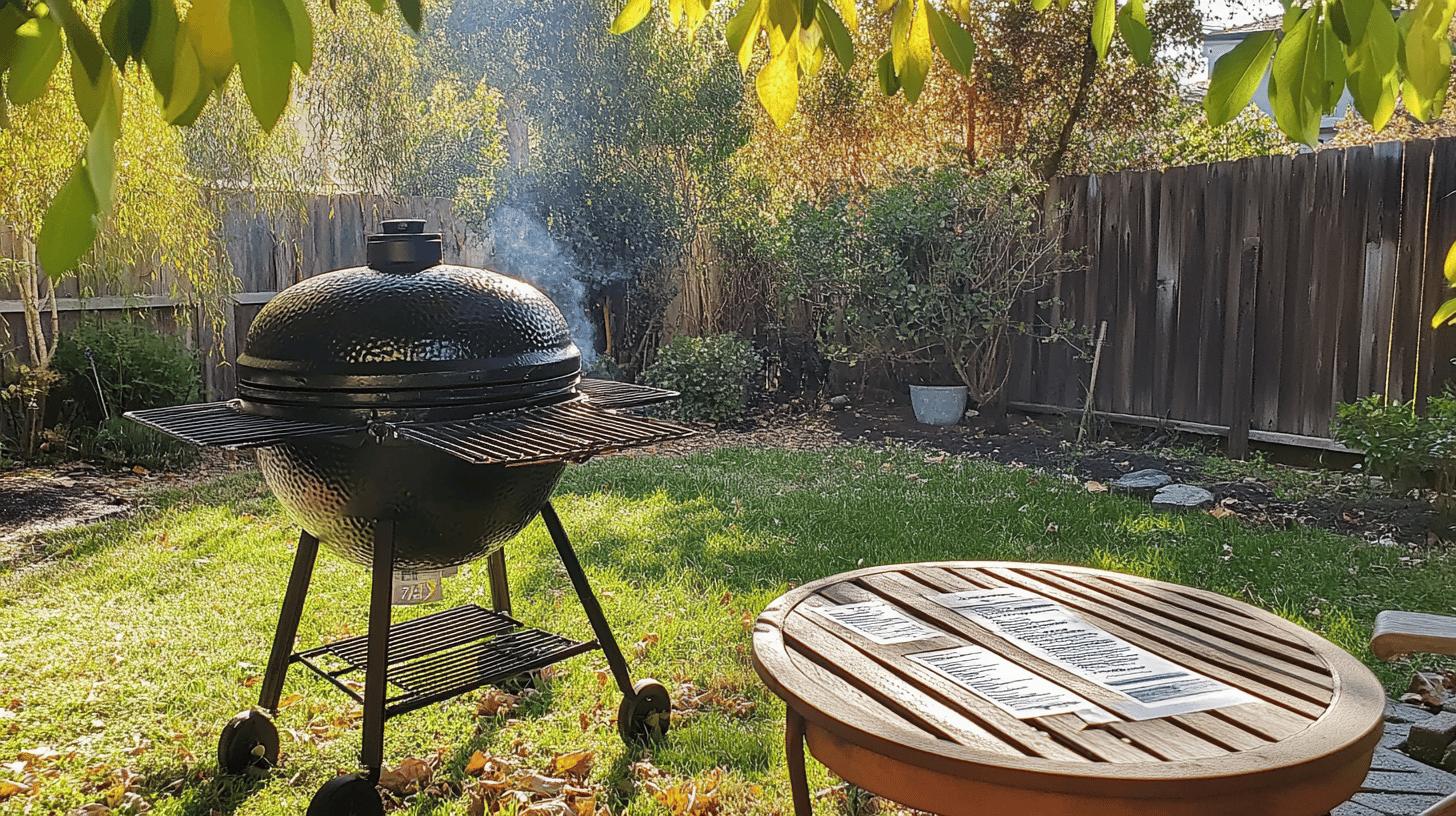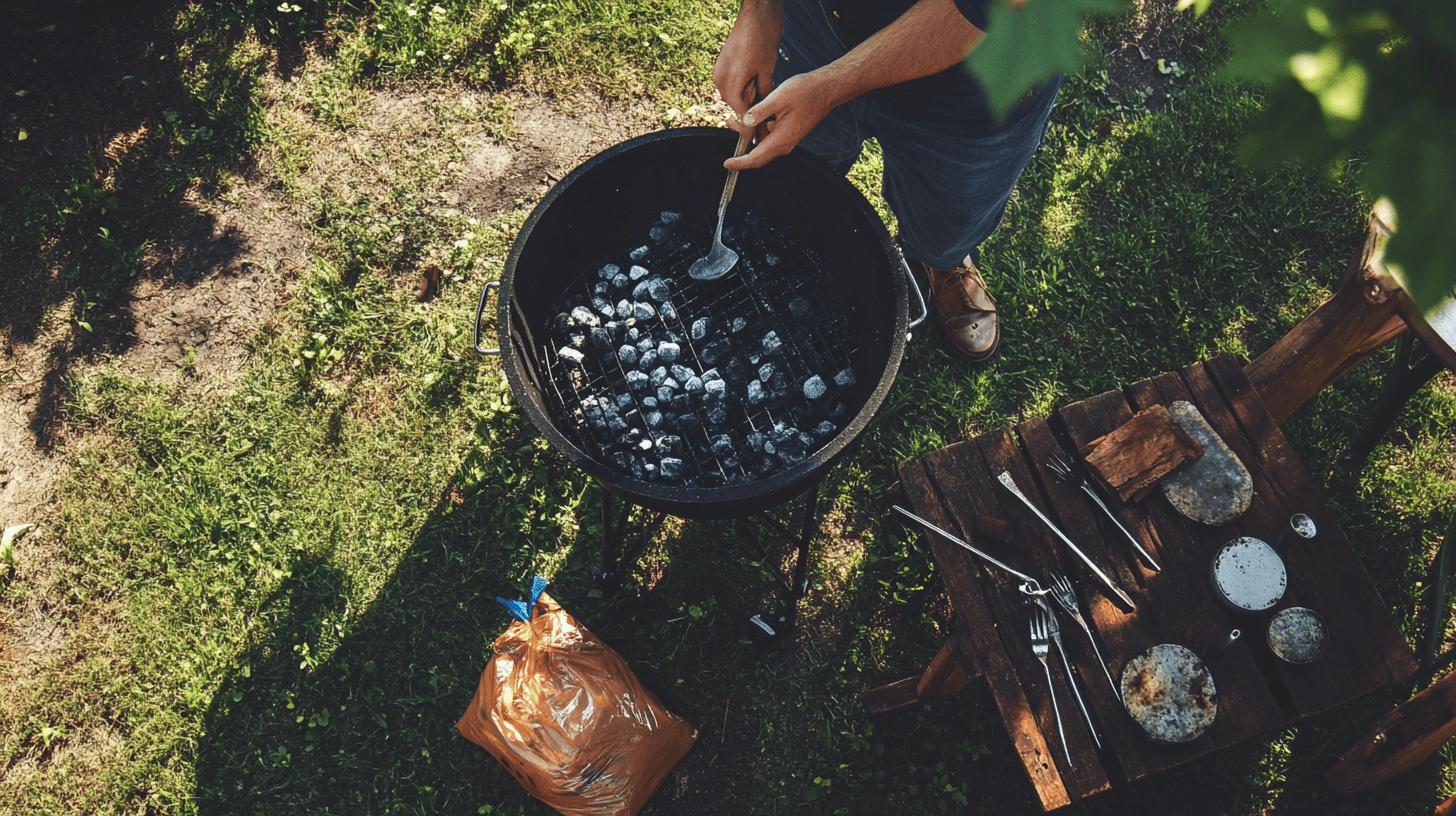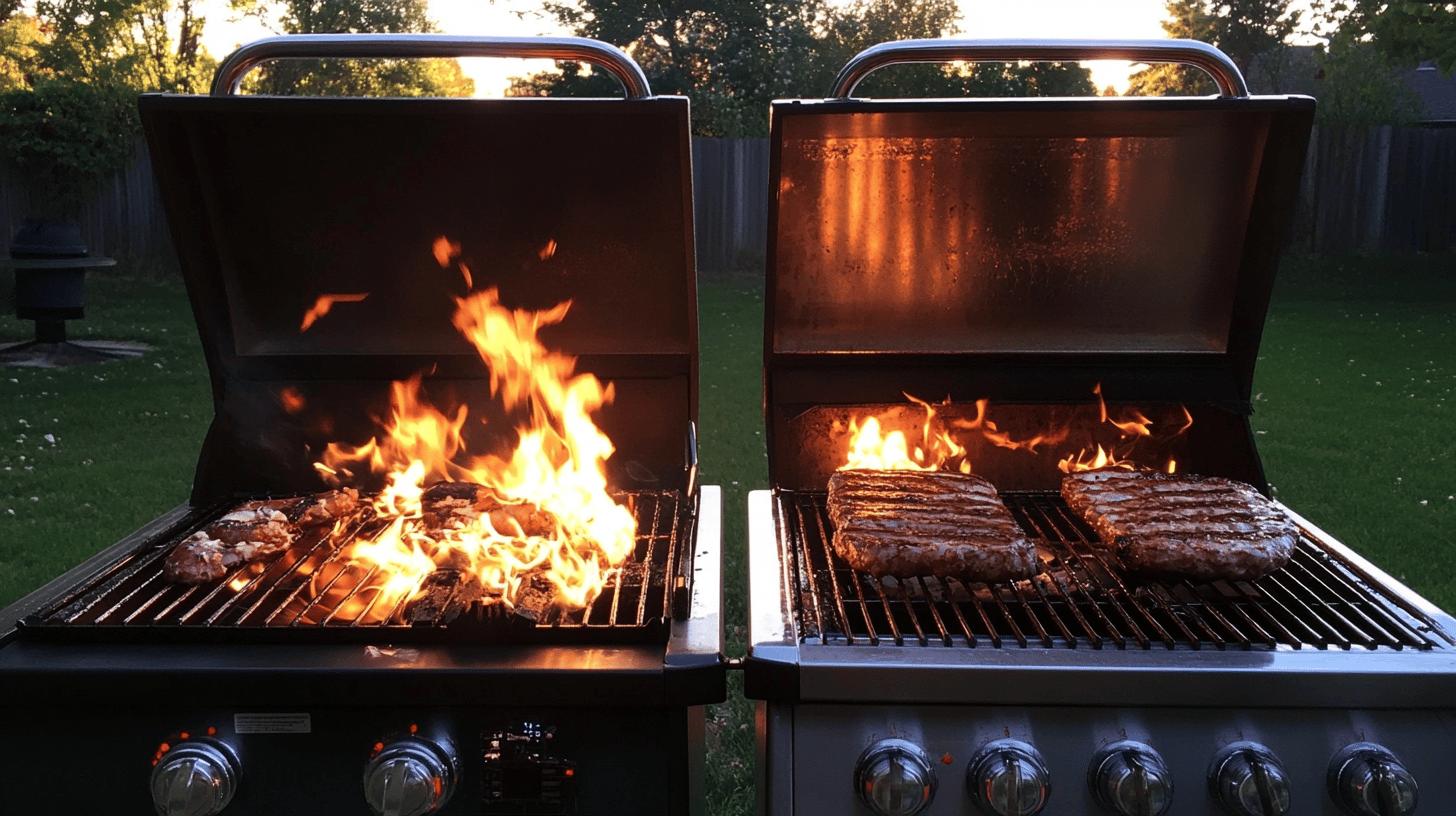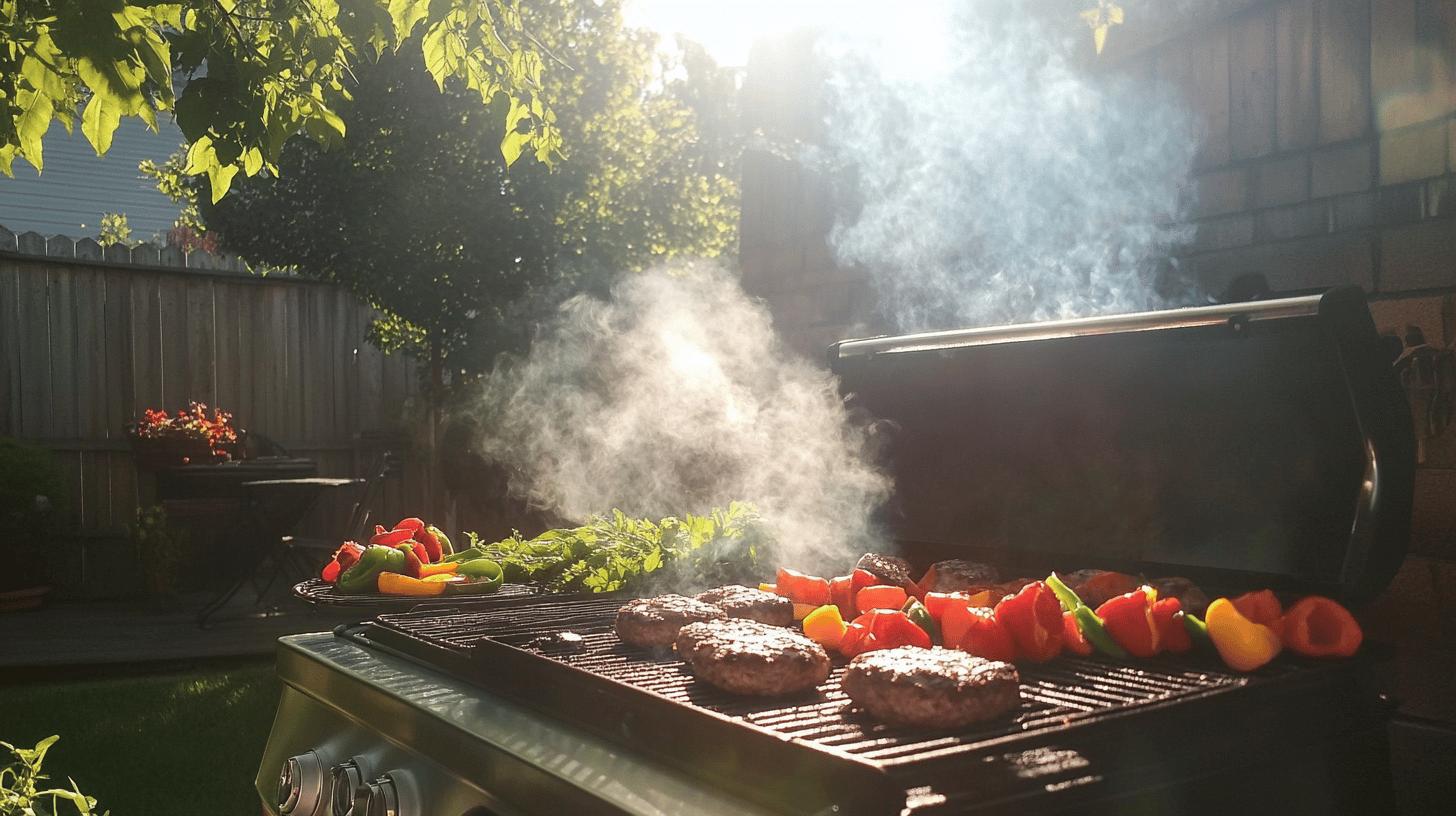Backyard Grilling: Charcoal Grills Pros and Cons
When it comes to mastering the art of backyard barbecues, the choice between charcoal and gas grills often sparks intense debate. If you relish the thought of grilling with a hint of nostalgia and the allure of smoky flavors dancing across your patty, you’re likely drawn to the charcoal side of the aisle. In this article, I’ll explore the pros and cons of charcoal grills, examining their unmatched ability to create rich barbecue flavors along with considerations of cost, environmental impact, and ease of use. Let’s dive in and uncover what makes charcoal grilling a cherished choice for many barbecue enthusiasts.
The Flavor Appeal of Charcoal Grills
Charcoal grills are celebrated for their ability to impart a rich, smoky flavor to food, creating a taste sensation that many barbecue enthusiasts crave. This distinct flavor stems from the charcoal briquettes, which release aromatic compounds as they burn. It’s this smoky essence that envelops your food, enhancing everything from steaks to vegetables with a depth that is hard to achieve with other grilling methods.
For those who relish a more traditional grilling experience, charcoal is often the go-to choice. Unlike gas grills, which provide convenience and speed, charcoal grills require a patient and attentive approach. This hands-on process involves arranging the briquettes and monitoring the temperature meticulously. While gas grills excel in ease of use, they often fall short in replicating the unique smoky profile that charcoal provides. The interaction of food juices with the hot coals produces flavors that are both intense and authentic, capturing the heart of classic barbecue.
Here are some practical tips to enhance the flavor of your charcoal grilling:
- Use lump charcoal for a cleaner burn and more natural flavor.
- Experiment with wood chips like hickory or mesquite to add different smoky notes.
- Control the airflow to maintain consistent temperatures for optimal flavor infusion.
- Allow the coals to ash over completely before cooking for an even heat.
- Try different briquette brands to discover subtle variances in flavor profiles.
Cost Considerations of Charcoal Grilling

Charcoal grills are often the go-to for those seeking an affordable entry into the world of backyard grilling. With prices for basic models starting as low as $20, they offer a budget-friendly option for beginners. However, the initial savings can be offset over time by the ongoing costs associated with fuel. A high-end charcoal grill can reach several hundred dollars, but even with these models, the allure lies in their upfront affordability compared to many gas grills.
| Expense | Cost Range |
|---|---|
| Charcoal (20 lbs) | $10 – $15 |
| Lighter Fluid | $5 – $10 |
| Grill Maintenance | $10 – $30 |
While the cost of continuously purchasing charcoal may add up, there are budget-friendly ways to manage these expenses. Opting for purchasing larger bags of charcoal or using lump charcoal can sometimes lead to savings. Additionally, maintaining your grill can prevent costly repairs. By ensuring proper care, such as cleaning grates and disposing of ash regularly, you can extend the lifespan of your grill, providing more years of enjoyment without frequent replacements.
Environmental Impact of Charcoal Grilling
Charcoal grilling often raises environmental concerns due to the carbon emissions produced during the burning process. While the smoky flavor of charcoal-grilled food is delightful, the impact on the environment is something eco-conscious grillers must consider. The production and burning of charcoal, especially traditional briquettes, release more carbon dioxide compared to other grilling methods. This can contribute to air pollution and a higher carbon footprint, making it less eco-friendly than alternatives like gas grills.
However, there are ways to enjoy the rich flavors of charcoal grilling while minimizing environmental harm. Switching to lump charcoal instead of briquettes is one of the most effective measures. Lump charcoal burns cleaner and produces less ash, reducing the overall environmental impact. Additionally, charcoal grills do not require a gas connection, which can be a plus for those seeking a more rustic, off-grid cooking experience. By adopting sustainable grilling practices, you can savor the taste of charcoal-grilled meals while being mindful of the planet.
- Choose lump charcoal over briquettes for a cleaner burn and reduced emissions.
- Incorporate natural fire starters to eliminate the need for chemical lighter fluids.
- Reuse partially burned coals for future grilling sessions to reduce waste.
- Consider planting trees or supporting reforestation projects to offset carbon emissions from grilling.
Convenience and Usability of Charcoal Grills

Setting up a charcoal grill can be a ritualistic and rewarding experience, though it’s not without its challenges. The process requires a bit of patience, as you need to allow 15-30 minutes for the coals to reach the optimal cooking temperature. This involves arranging the charcoal properly and using tools like a chimney starter to ignite them efficiently. Controlling the grill’s temperature relies heavily on adjusting the airflow through the vents, which can take some practice to master. For those who enjoy the hands-on aspect of grilling, this setup process only adds to the charm.
Once the grilling is done, the maintenance and cleaning of a charcoal grill can be more labor-intensive compared to gas grills. After a delightful session of cooking, you’ll find a layer of ash and residue that needs clearing. Regular cleaning of the grill grates is essential to prevent buildup and ensure even cooking in future sessions. Disposing of ash safely is crucial, as leftover embers can remain hot for hours. While this might seem like a chore, it becomes part of the overall experience, allowing grillers to forge a deeper connection with their equipment.
Many backyard enthusiasts revel in the traditional experience that charcoal grilling offers. For those looking to elevate their outdoor cooking setup, a backyard grilling station can transform your space into a culinary haven. Imagine having all your grilling tools and ingredients organized and within reach, making the process not only efficient but also enjoyable. A well-designed grilling station can enhance the overall experience, allowing you to focus on perfecting those smoky flavors that charcoal grills are renowned for. Whether you’re a seasoned griller or a novice, investing in a dedicated space for your grill can make all the difference in your backyard gatherings. There’s a certain joy in building and maintaining the fire, seeing it transform raw ingredients into savory delights. This process evokes a sense of nostalgia and authenticity that many find lacking in more modern, automated grilling methods. The open flame and smoke become an integral part of the cooking process, enhancing both the flavor and the atmosphere of any gathering.
- Chimney Starter: For efficient lighting of charcoal without lighter fluid.
- Grill Brush: To keep grill grates clean and ready for the next use.
- Tongs and Spatula: Essential tools for turning and handling food safely.
- Heat-Resistant Gloves: To protect hands from high temperatures and manage coals.
- Ash Bucket: For safe disposal of ashes and embers after grilling.
- Thermometer: For accurate temperature readings to ensure perfectly cooked meals.
Safety and Health Aspects of Charcoal Grilling
When it comes to charcoal grilling, fire safety is paramount. The open flames and high temperatures require careful handling to prevent accidents. Always set up your grill on a stable, non-flammable surface, and keep it at a safe distance from structures and overhanging branches. Using a chimney starter is a safer alternative to lighter fluid, reducing the risk of flare-ups. Never leave a lit grill unattended, and always have a fire extinguisher or a bucket of sand nearby. These precautions help create a secure grilling environment and prevent potential hazards.
Health concerns often arise from the emissions produced by charcoal grills. As charcoal burns, it can release harmful compounds that may be inhaled. To minimize exposure, ensure your grill is well-ventilated, ideally in an open space where smoke can dissipate quickly. Opt for natural lump charcoal over briquettes, as it tends to produce fewer emissions. Additionally, maintaining a clean grill by removing ash and debris can reduce smoke production and improve air quality around your grilling area.
For those new to charcoal grilling, some practical safety tips can enhance your experience. Start by investing in long-handled tools to keep a safe distance from the heat. Wear heat-resistant gloves to handle hot surfaces and coals confidently. Always ensure that coals are fully extinguished before disposal, using water to douse them if necessary. By following these guidelines, you can enjoy the delicious results of charcoal grilling while safeguarding your health and well-being.
Charcoal Grills vs. Gas Grills: A Comparative Analysis

Choosing between charcoal and gas grills often boils down to personal preference and grilling goals. Both have their unique benefits and challenges, and understanding these can help you make an informed decision. While charcoal grills are celebrated for their traditional approach and flavor, gas grills excel in convenience and speed. Let’s explore the distinct advantages each type of grill offers.
Advantages of Charcoal Grills
Charcoal grills are a favorite among purists for the rich, smoky flavor they impart to food. This flavor comes from the interactions between the food juices and hot coals, creating a taste that many consider quintessentially barbecue. Charcoal grills can reach higher temperatures, often exceeding 500°F, making them perfect for searing meats. This high heat capability allows for both direct and indirect grilling methods, providing versatility in cooking styles.
For those who relish the process, the traditional appeal of charcoal grilling is unmatched. Building a fire, managing the coals, and adjusting the airflow all contribute to an authentic grilling experience. This hands-on approach can be rewarding and adds a sense of accomplishment to the cooking process.
In summary, if you seek depth of flavor and enjoy a more involved grilling process, a charcoal grill might be your ideal choice.
Advantages of Gas Grills
Gas grills stand out for their convenience and efficiency. With just a turn of a knob, they heat up quickly, typically within 10-15 minutes, making them perfect for impromptu grilling sessions. The ability to control temperature precisely with built-in thermometers and control knobs enhances the cooking experience, allowing for consistent results every time.
These grills are also easier to clean, as they don’t produce ash, and the maintenance generally involves simply wiping down surfaces and emptying grease traps. Gas grills are often more compact, making them suitable for smaller spaces like patios and balconies.
In conclusion, if you prioritize ease of use and quick, efficient cooking, a gas grill would likely suit your needs best.
Final Words
Exploring the appeal of charcoal grills highlights the rich flavors they bring to backyard cooking. With their ability to infuse a smoky taste, these grills require commitment in setup, cost management, and sustainable practice.
Balancing flavor with the distinct environmental and safety aspects, charcoal grills offer a rewarding yet challenging grilling experience. While they demand care and attention, the authentic flavors they provide are unmatched.
With careful consideration of these factors, we can enjoy the many benefits of charcoal grilling while keeping safety and sustainability in mind. Let’s embrace this flavorful cooking method for our next backyard gathering!
FAQ
Is it healthier to grill with gas or charcoal?
Grilling with gas is generally considered healthier than charcoal, as it produces fewer carcinogens and emissions. Gas grills offer a cleaner cooking method, reducing potential health risks compared to charcoal grilling.
Is charcoal grilling carcinogenic?
Charcoal grilling can be carcinogenic due to the production of chemicals like polycyclic aromatic hydrocarbons (PAHs) and heterocyclic amines (HCAs) when meat is cooked at high temperatures.
Which is better for the environment, charcoal or gas grill?
Gas grills are better for the environment as they produce fewer carbon emissions compared to charcoal grills. Opting for gas reduces the ecological impact of outdoor cooking.
How far should a charcoal grill be from the house?
A charcoal grill should be placed at least 10 feet from the house to prevent accidental fires. This distance minimizes safety risks and prevents heat damage to structures.
Can I use a charcoal grill in my backyard?
Yes, you can use a charcoal grill in your backyard, provided it’s in a safe, open space away from structures and flammable materials to ensure safety.
Is it healthier to grill with wood or charcoal?
Grilling with wood is often seen as a healthier option than charcoal. It produces fewer carcinogens and imparts a natural flavor, though both methods require proper ventilation.






